Dapol
This supplier is a relatively new addition to the N Gauge market but they have chosen well and prodiced a number of models which have been well received. As I understand it they produce each model in a limited run, so at any given time only a proportion of the range is available. This allows them to produce a wider range of liveries and the range is a welcome addition to the N Gauge scene. The photographs used here were supplied by Dapol, however I had to reduce them in size rather a lot to keep within my available web space. The full size illustrations can be seen on the Dapol website
Gunpowder van
This model represents the RCH standard design for a gun powder van, the liveries offered include a range of railway companies and also the yellow Ferrocrete concrete company livery.

Bulk Grain Hopper
This Bulk Grain Hopper is the BR standard design dating from the 1950s. They remained in regular use in the 1970s and in occasional use into the early 1980s I believe.
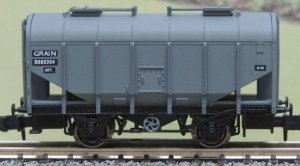
Southern Railway Covered Carriage Truck
This model represents the Southern Railway Covered Carriage Truck. I understand that this design was introduced by the LSWR but vans of this type were built by the Southern Railway and remained in use, mainly for parcels traffic, well into the BR era. Produced in Southern Railway and British Railways liveries, the example shown is in post nationlisation BR Southern Region green livery.
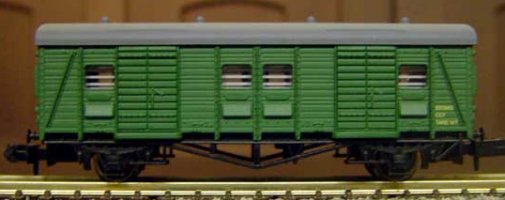
P.D.Marsh offer a white metal kit of this van with alternative non-door ends used on the general utility van variant. The kit runs on a modified Peco 15 foot wheelbase chassis.
Dogfish
This model represents the BR standard four wheeled ballast hopper, a very handy addition to the RTR market (and a useful compliment to the Parkside Dundas non-hopper Grampus kit). Just over a thousand were built and long rakes of these were a regular feature of the system from its introduction in 1959 until the 1980s, possibly later. The model is available in a number of liveries, some are available in 'rusty livery' shown below bottom.
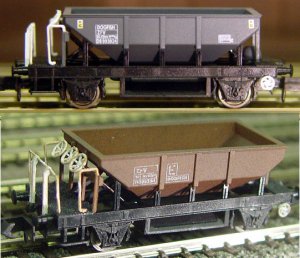
Some 200 or so of these hoppers were modified to carry slag from steel works (a valuable fertiliser), I do not know what the modifications were exactly however I gather slag tended to be dusty so it may have been simply some fittings to attach a tarpaulin.
21T Hopper
This model represents the BR standard 21 ton coal hopper wagon. A useful model it is slightly heavier than the N Gauge Society kit and, as with the kit, benefits from the use of the N Gauge Society detailing kit to add the wire rod handrails at either end.

The BR standard design was based on an LNER type dating back to the 1930s, as these were actually built by sub contractors there was a fair bit of variation in the detail, so altering the brake handle produces a useful LNER version. In the 1940s the Ministy of Transport used the same design, although with thicker plates, the sketch below shows the LNER and MOT variants.
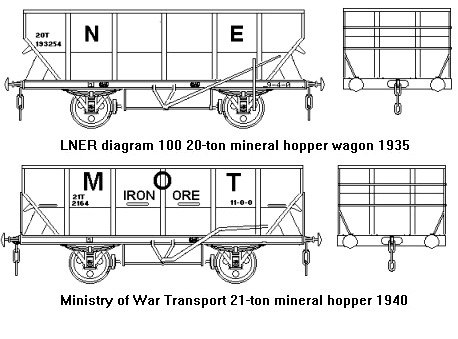
Two other variations can be built, a small number of 21 ton hoppers had a rail added and were used for grain traffic, a single example had a solid roof fitted with two sliding hatches (operated by hand wheels on the chassis). Both are illustrated in one of Dave Larkin's books (BR Standard Wagons Dave Larkin, D Bradford Barton, 1979, ISBN-0851532403) but this does not show the top view of the solid roof version. The grain version would normally have a tarpaulin fitted (whether empty or full) so the rail can be a rectangle of card glued into the body with a paper tarpaulin added.
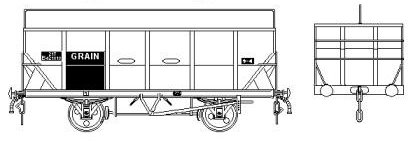
20T Mineral BR
This is the riveted version of the common all metal mineral wagon with two side doors and an end door, suitable for layouts from the early 1920s to the later 1970s (although getting rare by that time).

Ferry Wagon
This is a bogie ferry van from the 1980s 'Speedlink' era.
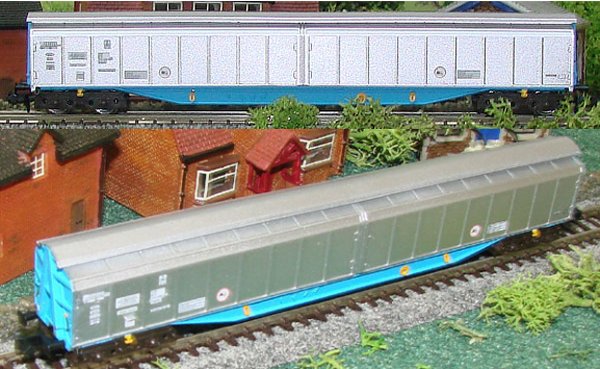
The detail on this sliding-wall van is excelent, the photo below shows a close up on one end of the model.
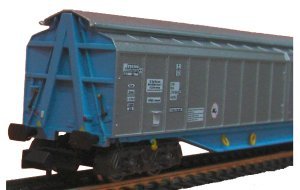
7 PL end door mineral wagon
An RCH standard (1923) design, a useful adjunct to the Peco model (which has no end door). The earlier wagons were a nine foot wheel base chassis, 16 foot 6 inches over headstocks (Peco now offer a kit of this type on their nine foot wheelbase chassis). Both 10 or 12 ton versions were produced, the larger capacity wagon having heavier axles. From the early 1920's the 12 tonner was the standard form (a 10 ton wagon occupied the same siding space but earned less revenue than the 12 ton type). Seven plank end-door mineral wagons were used by both the railway companies and in large numbers by private owners.
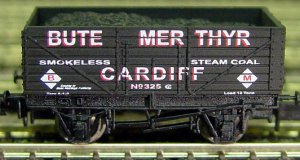
6 Wheel Milk
A useful and much requested model of the standard six wheeld tank. Milk tanks were unusual in that the chassis was provided by the railway company but the tank itself was the property of the dairy company operating the wagon. The chassis was painted in the railway company livery, including its logo, and carried the number, the wheel base, the instruction `NOT TO BE LOOSE OR HUMP SHUNTED', fast traffic stars and the tare weight of the wagon. However the location of these markings varied somewhat and not all the tanks carried the fast traffic stars (non of the BR tanks I have seen photographs of have these, nor do any of the immediately pre-war GWR tanks). A full milk tank weighed as much as a loaded passenger coach so if you are pulling any number of them you should have a decent sized loco at the front end. The early tanks had a four wheeled chassis carrying a glass-lined barrel with no internal baffles, this resulted in the milk sloshing about inside the tank which degraded the milk and made the wagons unstable. Following a series of derailments in the early 1930's a six wheeled chassis was introduced, which gave a smoother ride and six wheelers soon became the standard chassis for milk tankers, although each company had its own design features. Six wheeled tanks continued in production under British Railways into the early 1950's. There were many minor variations in these tanks, the example modelled is suitable for any layout set between the 1930s and the 1970s.
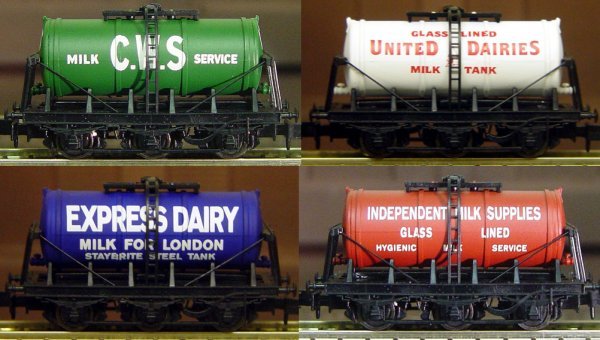
SIPHON G
A nice outside framed version of the GWR gangwayed bogied milk churn van (the Lima model was of the later inside framed type). By the 1930s these were in use for parcels traffic as well as carrying milk churns and dairy produce.
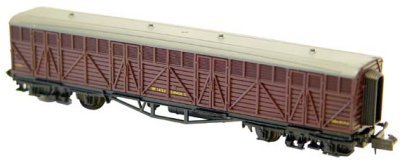
SIPHON H
A useful outside framed GWR milk churn van, this type had a higher and more curved roof profile with end doors and no gangway connection. As with the G above by the later 1930s they were regularly used on parcels traffic and lasted into the later 1960s I believe.
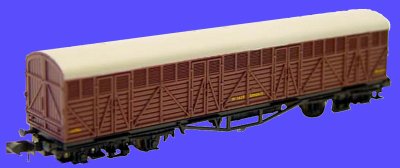
The sketch below was made to show possible variations on the Lima inside-framed Siphon G but serves to show the differences between the two Dapol models as well.
Fig ___ Siphon Variants

____________________________________________
^
Go to top of page














